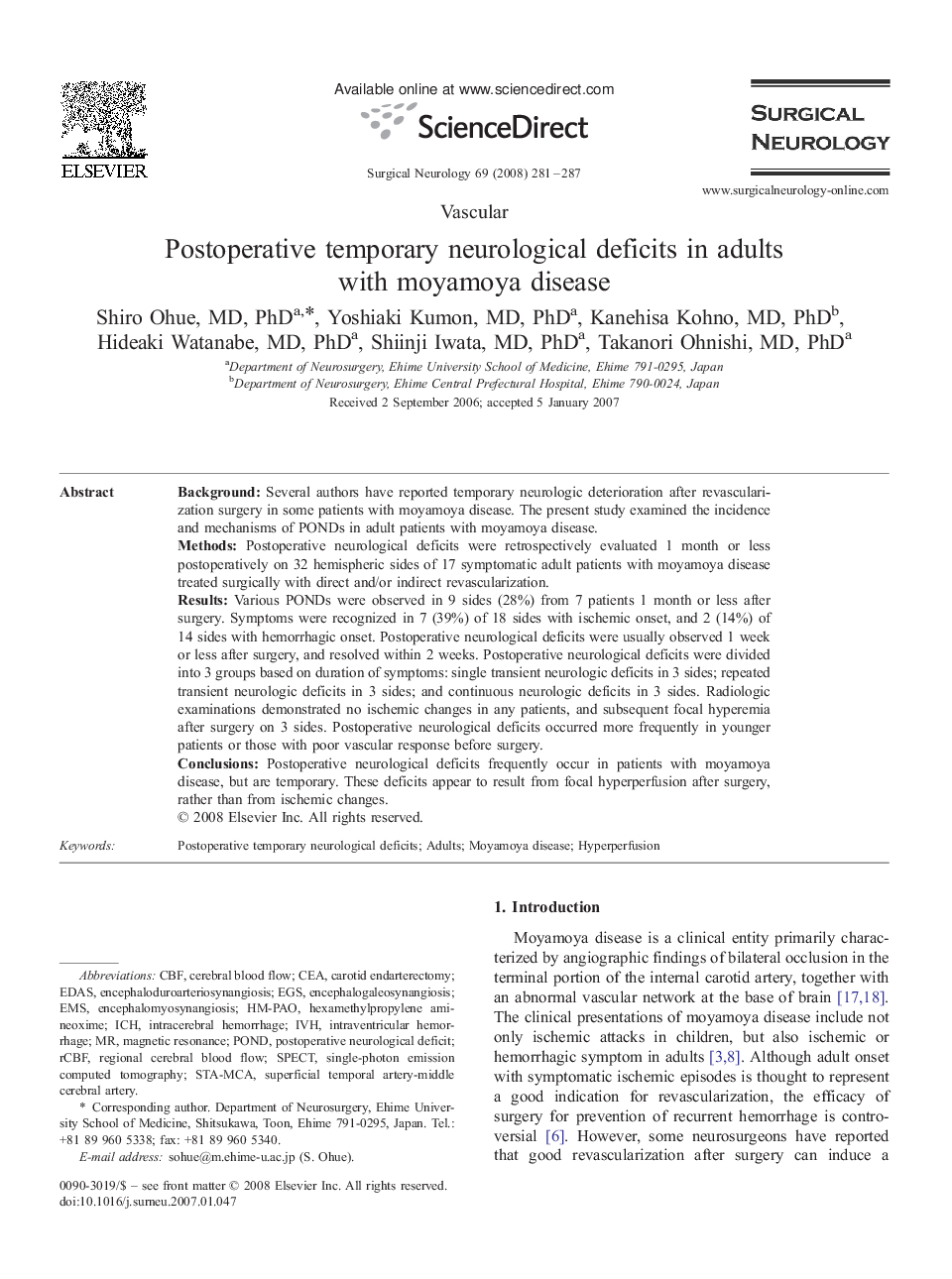| Article ID | Journal | Published Year | Pages | File Type |
|---|---|---|---|---|
| 3093186 | Surgical Neurology | 2008 | 6 Pages |
BackgroundSeveral authors have reported temporary neurologic deterioration after revascularization surgery in some patients with moyamoya disease. The present study examined the incidence and mechanisms of PONDs in adult patients with moyamoya disease.MethodsPostoperative neurological deficits were retrospectively evaluated 1 month or less postoperatively on 32 hemispheric sides of 17 symptomatic adult patients with moyamoya disease treated surgically with direct and/or indirect revascularization.ResultsVarious PONDs were observed in 9 sides (28%) from 7 patients 1 month or less after surgery. Symptoms were recognized in 7 (39%) of 18 sides with ischemic onset, and 2 (14%) of 14 sides with hemorrhagic onset. Postoperative neurological deficits were usually observed 1 week or less after surgery, and resolved within 2 weeks. Postoperative neurological deficits were divided into 3 groups based on duration of symptoms: single transient neurologic deficits in 3 sides; repeated transient neurologic deficits in 3 sides; and continuous neurologic deficits in 3 sides. Radiologic examinations demonstrated no ischemic changes in any patients, and subsequent focal hyperemia after surgery on 3 sides. Postoperative neurological deficits occurred more frequently in younger patients or those with poor vascular response before surgery.ConclusionsPostoperative neurological deficits frequently occur in patients with moyamoya disease, but are temporary. These deficits appear to result from focal hyperperfusion after surgery, rather than from ischemic changes.
